Subscribe For $10 Off 1st Background
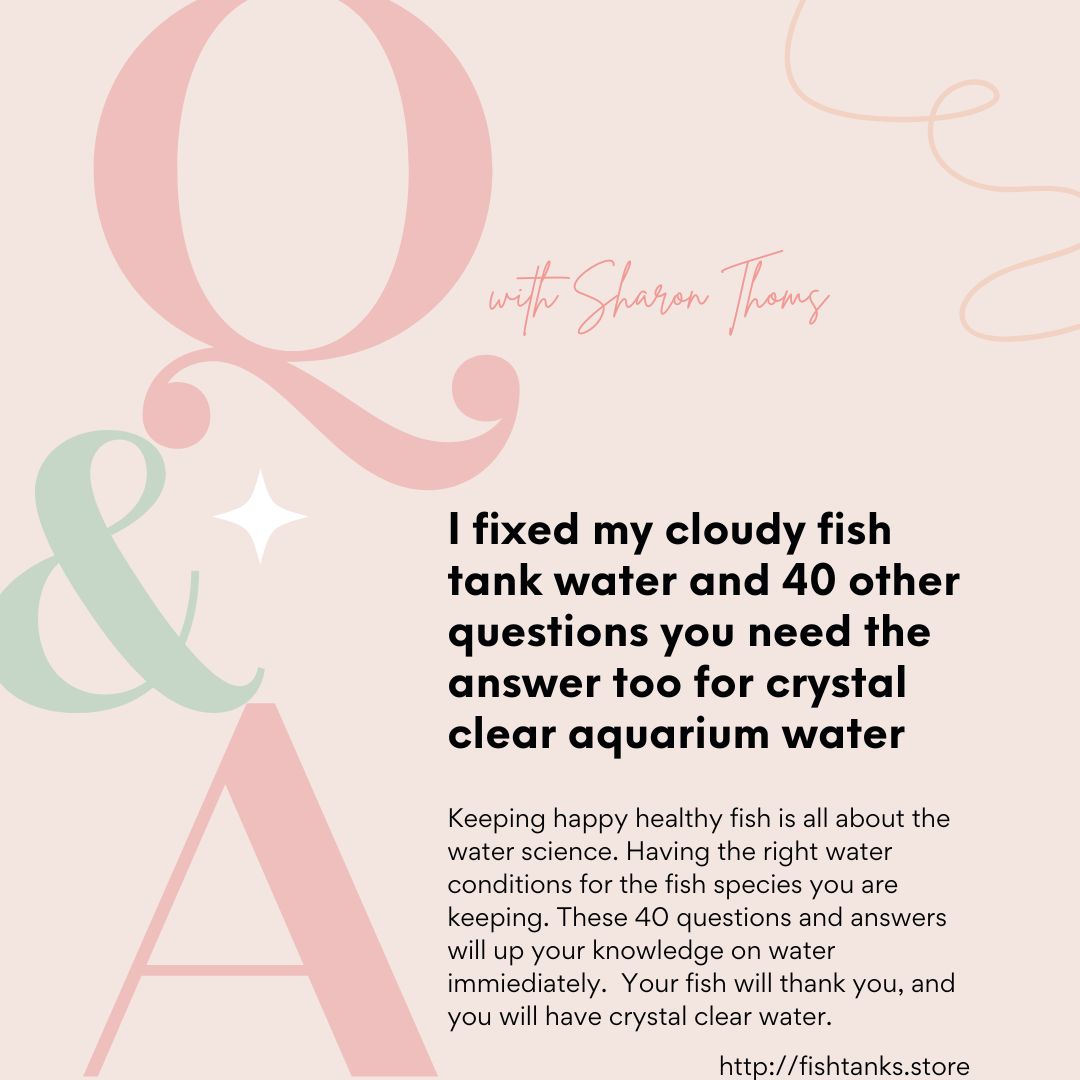
40 Q & As: Why Is My Aquarium Water Cloudy? [Easy Ways To Now Fix It]
“Why is my aquarium water cloudy?” I yelled down the phone to my local aquarium store. I need you to help me. “My new fish tank is cloudy.” Learn how I fixed my fish tanks cloudy tank water, turning my water into clear fish tank water, easily, by learning these most important facts about fish tanks and most importantly about water. In this post you will discover the 40 most important questions and answers about clear fish tank water.
Why is my aquarium water cloudy?
Why is my aquarium water cloudy? Read this post as many times as you require to learn the answers to these most important questions. These 40 questions and answers are all you need to know ever about having healthy and clear fish tank water, and a healthy crystal clear aquarium.

Heterotrophic Bacteria Will Make Your Tank Foggy
What are they?
Heterotrophic bacteria are microorganisms that feed on organic matter, such as carbohydrates, proteins, and fats. In aquariums, they thrive on dissolved organic compounds (DOCs) from fish waste, uneaten food, and decaying plants. They will make your water milky.
These factors all contribute to turning your fish tank foggy. If your looking for the answer to the question: why is my fish tank foggy? These microorganisms are part of the food chain, that will make your tank go foggy.
Aqueon suggests in their article on milky water that it is best to let it play out providing the nitrites and amonia levels aren’t too high. If they are, do a water change immiedatley. You can get more of their ideas on cloudy water following this link.

Role in cloudy water:
When there’s an excess of DOCs, heterotrophic bacteria multiply rapidly in the water column, causing the water to appear milky or cloudy. This is often called a “bacterial bloom.” This is the furthest point from clear fish tank water.
Protozoa
What are they?
Protozoa are single-celled organisms that are more complex than bacteria. They include creatures like paramecium, rotifers, and ciliates. All problems that make you shriek why is my fish tank water cloudy?

Stunning New Fish Tank Background From Fish Tanks .Store Click the link to Shop Now
Role in cloudy water:
Protozoa feed on heterotrophic bacteria. As the bacterial population grows, protozoa multiply to consume them, which can further cloud the water. This stage is often referred to as “infusoria.”
Key Difference
Heterotrophic bacteria are the initial cause of cloudy water, feeding on DOCs.
Protozoa are the next stage, feeding on the bacteria and contributing to the cloudiness.

So, while they’re not the same, they work in a sequence: DOCs → Heterotrophic bacteria → Protozoa (infusoria).
Why Does This Matter for Your Aquarium?
To clear cloudy water, you need to address the root cause: excess DOCs.
Improve filtration, reduce overfeeding, and allow beneficial bacteria to establish in your filter media. This shifts the balance away from heterotrophic bacteria and protozoa in the water column.
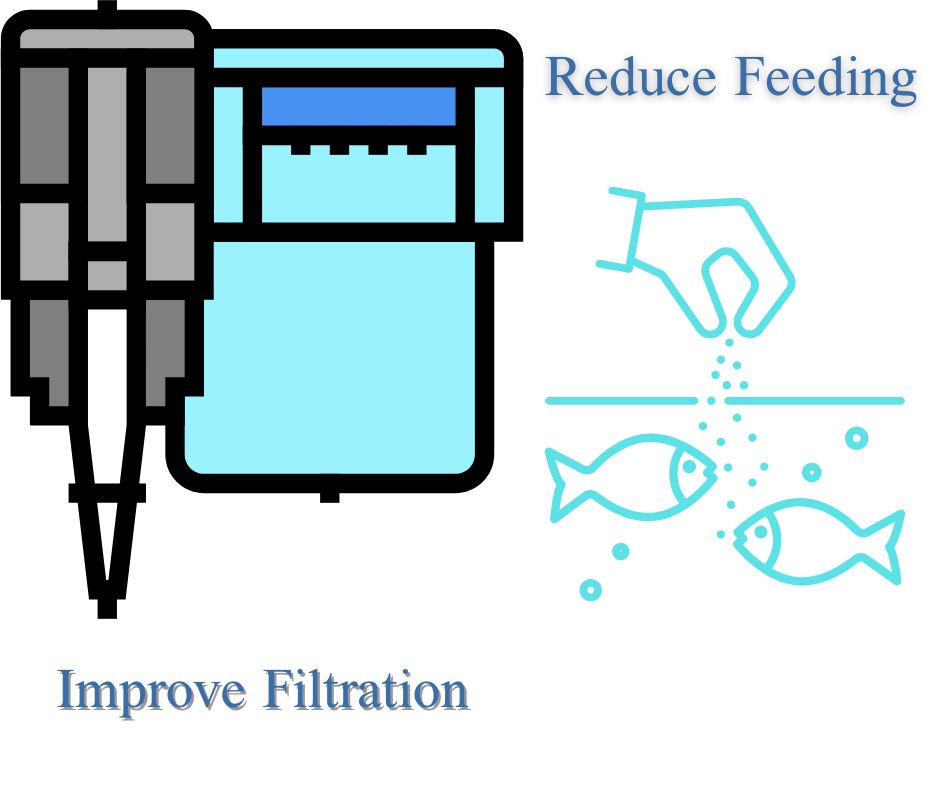
40 Questions and Answers For Why is my aquarium water cloudy?
1. What is cloudy water in an aquarium?
A: Cloudy water, often called a “bacterial bloom,” is caused by a surge in bacteria and tiny organisms like protozoa feeding on dissolved organic compounds (DOCs) in the water.
2. Why is my aquarium water cloudy?
A: Milky water is usually a bacterial bloom caused by excess food, fish waste, or an immature filter that hasn’t built up enough beneficial bacteria.
3. Is cloudy water harmful to fish? Why is my aquarium water cloudy?
A: Usually not, but it can stress fish if left unresolved. It’s a sign that your tank’s ecosystem is out of balance.
4. How do I fix cloudy water?
A: Stop overfeeding, upgrade your filter media (use foam or pot scrubbers), avoid over-cleaning, and be patient as beneficial bacteria establish.
5. Can I prevent cloudy water in a new tank?
A: Yes! Cycle your tank properly, avoid overfeeding, and use high-surface-area filter media like foam or pot scrubbers.
6. What causes bacterial blooms?
A: Excess food, fish waste, or insufficient beneficial bacteria in the filter. These feed heterotrophic bacteria, which cloud the water.
7. Should I change the water if my tank is cloudy?
A: Not necessarily. Overdoing water changes can remove the ammonia and nutrients needed to establish beneficial bacteria, prolonging the problem.

8. How long does cloudy water last?
A: It can last a few days to a few weeks, depending on the cause. Be patient and let the beneficial bacteria in your filter catch up.
9. Can I use UV sterilizers to clear cloudy water?
A: Yes, but it’s a temporary fix. UV kills free-floating bacteria but doesn’t address the root cause, like overfeeding or poor filtration.
10. What’s the “brown gunk” in my filter?
A: That’s beneficial bacteria! It’s essential for breaking down waste and keeping your water clear. Don’t over-clean it!
Should you wait to clean your filter when you realise it looks full of gunk, especially when it’s a sponge filter or do you think you should squeeze it out and clean it weekly with your water changes?

It’s my best suggestion that you should even leave your sponge filters to fill up with gunk to the point where it seems like they are not filtering as well as they should be, because that means you don’t lose as much beneficial backteria that has built up in the filter.
11. How often should I clean my filter?
A: Only when the water flow slows down. Rinse media lightly in tank water—never under tap water!
12. Can overfeeding cause cloudy water?
A: Absolutely! Uneaten food breaks down into DOCs, which feed bacteria and cloud the water.
13. What’s the best filter media for clear water?
A: Foam blocks, pot scrubbers, or static K1 media. They have high surface areas for beneficial bacteria to grow.
14. Do I need to cycle a new filter?
A: Yes! A new filter needs time to build up beneficial bacteria. Use “fish-in” cycling techniques if you already have fish.
15. Can large gravel cause cloudy water?
A: Yes! Food can get trapped in large gravel, decompose, and release DOCs that feed bacteria.
16. What’s the difference between heterotrophic and beneficial bacteria?
A: Heterotrophic bacteria feed on DOCs and can cloud water. Beneficial bacteria break down ammonia and nitrite and live in your filter.
17. Should I use Purigen to clear cloudy water?
A: No. Purigen is ineffective for cloudy water. Focus on improving filtration and reducing DOCs instead.
18. How do I know if my tank is overstocked?
A: If your filter can’t keep up with the waste produced, you’ll see cloudy water, high ammonia, or nitrite levels.
19. Can kids dumping food in the tank cause cloudy water?
A: Yes! Excess food breaks down into DOCs, fueling bacterial blooms. Do a large water change if this happens.
20. Do I need aeration in my tank?
A: Yes! Beneficial bacteria need oxygen to thrive. Use an air stone or increase surface agitation.
21. What’s the best way to feed my fish?
A: Feed only what they can eat in 2-3 minutes, once or twice a day. Avoid overfeeding That way you will never have to say why is my aquarium water cloudy?
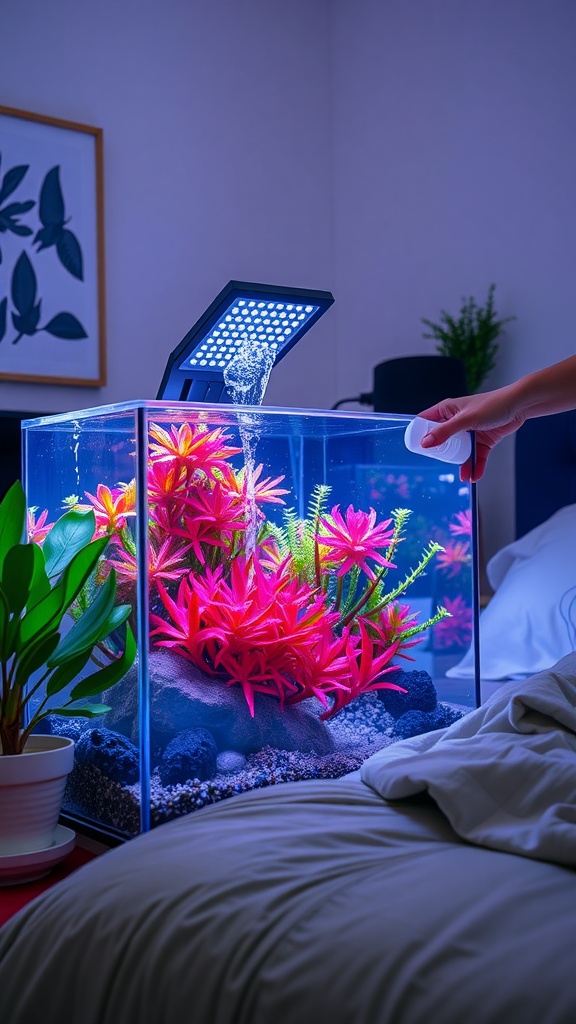
22. Can medications cause cloudy water?
A: Yes! Antibiotics or medications can kill beneficial bacteria, disrupting the nitrogen cycle.
23. What’s “new tank syndrome”?
A: It’s when a new tank hasn’t established enough beneficial bacteria, leading to cloudy water and unstable water parameters. It’s certainly a big reason as to why your asking “Why is my aquarium cloudy”
24. Can live plants help prevent cloudy water?
A: Yes! Plants absorb excess nutrients that would otherwise feed bacteria.
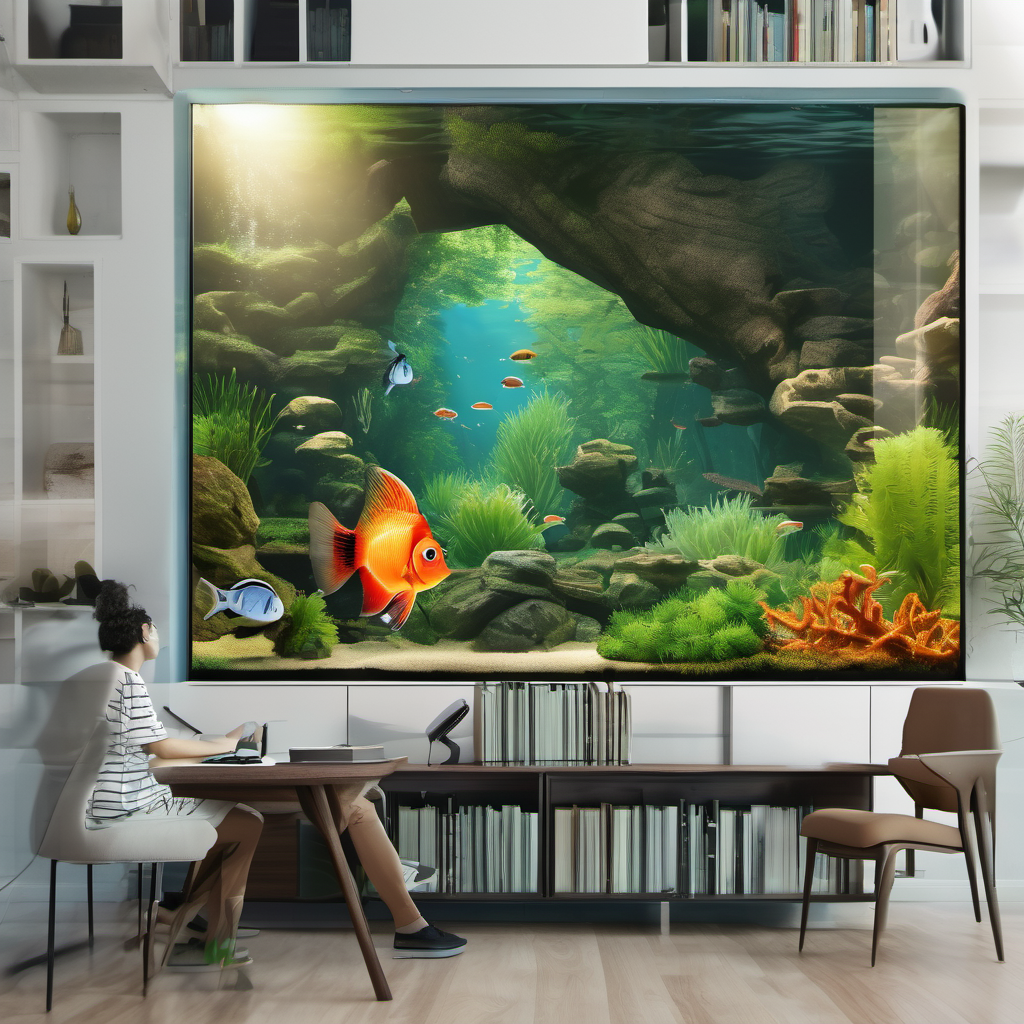
25. How do I know if my filter is working properly?
A: Check for steady water flow and clear water. If it’s cloudy or the flow is slow, your filter may need maintenance.
26. What’s the best substrate so its never the reason for me to say, why is my tank water cloudy?
A: Fine-grained substrate prevents food from getting trapped and decomposing.
27. Can I use polishing pads to clear cloudy water?
A: Yes, but they’re a temporary fix. They trap particles but don’t address the root cause.
28. How do I cycle a tank with fish in it?
A: Feed sparingly, test water daily, and do small water changes to keep ammonia and nitrite levels safe.
29. What’s the biggest mistake new fishkeepers make?
A: Over-cleaning their filter! The “brown gunk” is beneficial bacteria—don’t remove it!
Leaving fish without food while on vacation is this good or should you get a fish sitter?
Fish sitters, often end up over feeding your fish and this causes more trouble, than your fish going without food for a couple of days. If it was up to me, i’d say either leave a feeding block, designed for holidays, in your aquarium or you could fill up an auto fish feeder and that will take care of your fish while you are away.This way you never have to think, Why is my aquarium water cloudy?
30. Can I leave my fish without food while on vacation?
A: Yes! Fish can go without food for up to two weeks. It’s safer than risking overfeeding by a fish sitter.
31. What’s the best way to clean filter media?
A: Rinse it lightly in a bucket of tank water. Never use tap water—it can kill beneficial bacteria.
32. How do I know if my tank is mature?
A: A mature tank has stable water parameters, clear water, and a well-established filter with plenty of “brown gunk.”
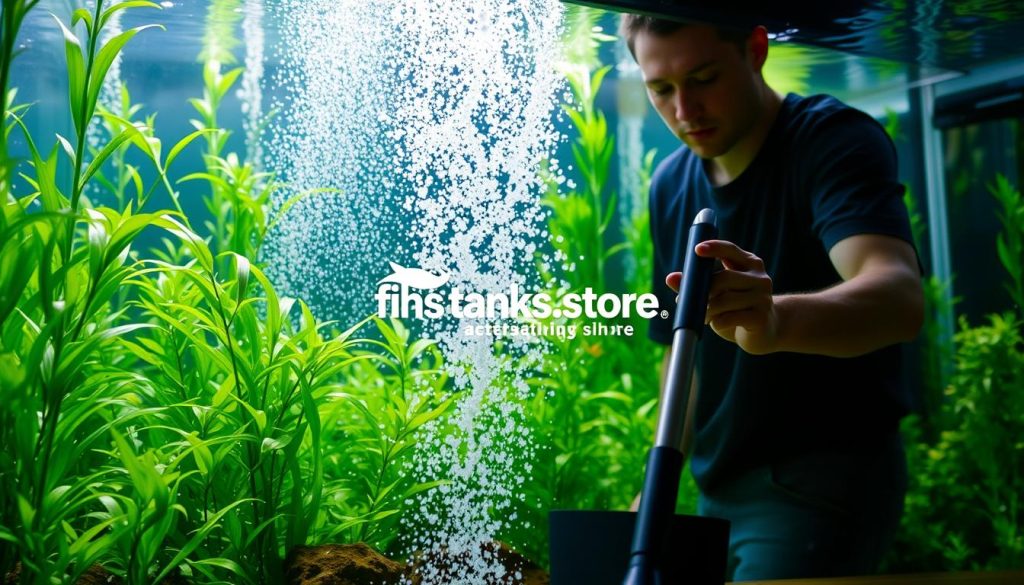
33. Can I use pot scrubbers in my filter?
A: Yes! They’re cheap, effective, and provide lots of surface area for beneficial bacteria.
34. What’s the role of infusoria in cloudy water?
A: Infusoria are tiny organisms that feed on bacteria, contributing to the cloudiness.
35. How do I test my water parameters?
A: Use a liquid test kit to check ammonia, nitrite, nitrate, and pH levels weekly.
36. Can I use a sponge filter to clear cloudy water?
A: Yes! Sponge filters are great for biological filtration and can help clear cloudy water over time.
37. What’s the best way to aerate my tank?
A: Use an air stone, powerhead, or surface skimmer to create turbulence and increase oxygen levels.

38. Can I use under-gravel filters?
A: Yes, but only if you don’t clean them often. They work best when left alone for long periods.
39. What’s the biggest myth about cloudy water?
A: That it’s caused by beneficial bacteria in the water column. It’s actually heterotrophic bacteria feeding on DOCs (Decomposed Organic Compounds: uneaten food and fish waste).
40. How do I know if my tank is overfed?
A: If you see uneaten food or your water turns cloudy shortly after feeding, you’re overfeeding.
The Chain Reaction From Overfeeding and Excess Waste: Cloudy Milky Foggy Water
Overfeeding or Excess Waste:
Uneaten food and fish poop break down into dissolved organic compounds (DOCs) and
these DOCs are like a buffet for heterotrophic bacteria.
Heterotrophic Bacteria Boom:
Without enough beneficial bacteria in your filter to process the DOCs, heterotrophic bacteria multiply rapidly in the water column and this causes the water to turn milky or cloudy— which is called a bacterial bloom.
Protozoa Join the Party:
The explosion of heterotrophic bacteria attracts protozoa (tiny organisms like paramecium and rotifers) and
they feed on the bacteria, further clouding the water.
Insufficient Brown Gunk:
If your filter doesn’t have enough beneficial bacteria (the “brown gunk”), it can’t keep up with the waste breakdown.
This leaves the DOCs in the water column, fueling the cycle of bacteria and protozoa.
The Way To Fix It for Clear Fish Tank Water
Feed only what your fish can eat in 2-3 minutes, once or twice a day.
Remove uneaten food promptly.
Build Up Your Filter’s Brown Gunk:
Avoid over-cleaning your filter media. The “brown gunk” is where beneficial bacteria live!
Use high-surface-area media like foam blocks or pot scrubbers to give bacteria more space to grow.
Be Patient:
If it’s a new tank, it takes time for beneficial bacteria to establish. This is part of the cycling process.
Avoid large water changes unless absolutely necessary, as they can remove the ammonia and nutrients needed for bacteria to grow.
Improve Filtration:
Add a sponge filter or upgrade to a canister filter with better media if your current filter isn’t keeping up.
Test Your Water: For Clear Fish Tank Water
Regularly check ammonia, nitrite, and nitrate levels to ensure your tank is cycling properly.
Why Brown Gunk is Your Best Friend
The “brown gunk” in your filter is a biofilm full of beneficial bacteria.
These bacteria break down ammonia (from fish waste) into nitrite, and then into nitrate, which is less harmful.
Without enough brown gunk, the waste stays in the water column, feeding heterotrophic bacteria and protozoa, leading to cloudy water.
Overfeeding + insufficient brown gunk = excess DOCs → heterotrophic bacteria boom → protozoa bloom → cloudy water.
Fix it by reducing feeding, building up your filter’s beneficial bacteria, and being patient during the cycling process.
Crystal Clear Fish Tank Water: Everything You Need To Know
If you still are having trouble with cloudy water, you can download our cloudy water and maintenance schedule, to help you clear the cloudy water and get into a routine. This will make all the difference to your tank in the future.
Fish Tank Background Stickers
To make your tank maintenance even easier, why not try setting up your aquarium with a static vinyl fish tank background from our site, fish tanks store. With over 100 images to choose from and free to upload your own custom image. Keeping your tanks water sparkling has never been easier. For all the info check out our complete guide to fish tank backgrounds.
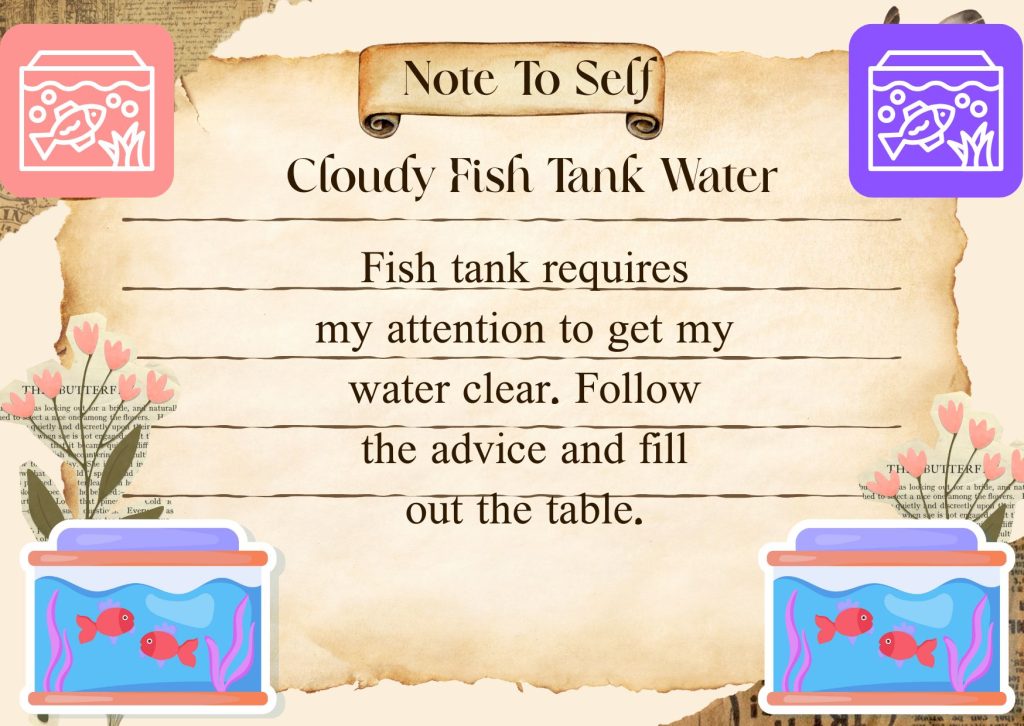
If I can help you in any way, please reach out by comment under the post, or by email, and I will be glad to do what I can to help you if your still saying “why is my aquarium water cloudy”.
As always thanks for reading, by Sharon Thoms (author)

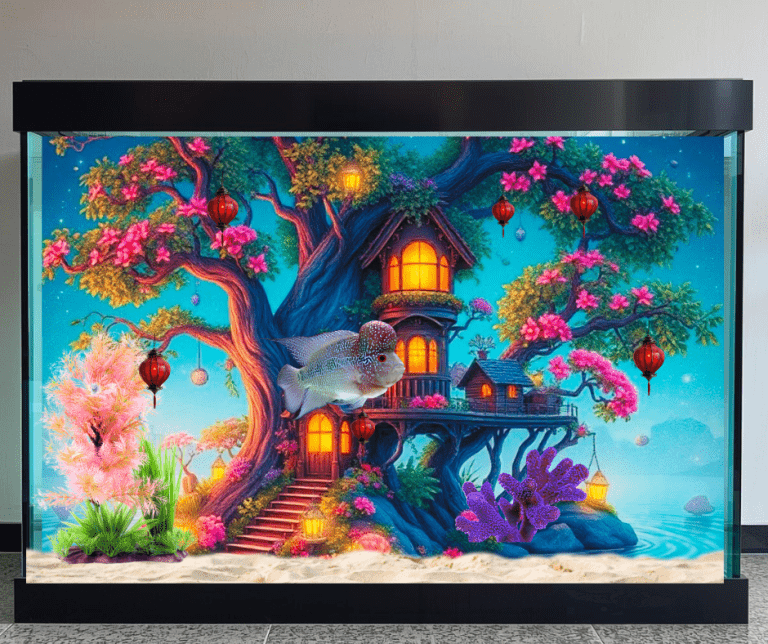
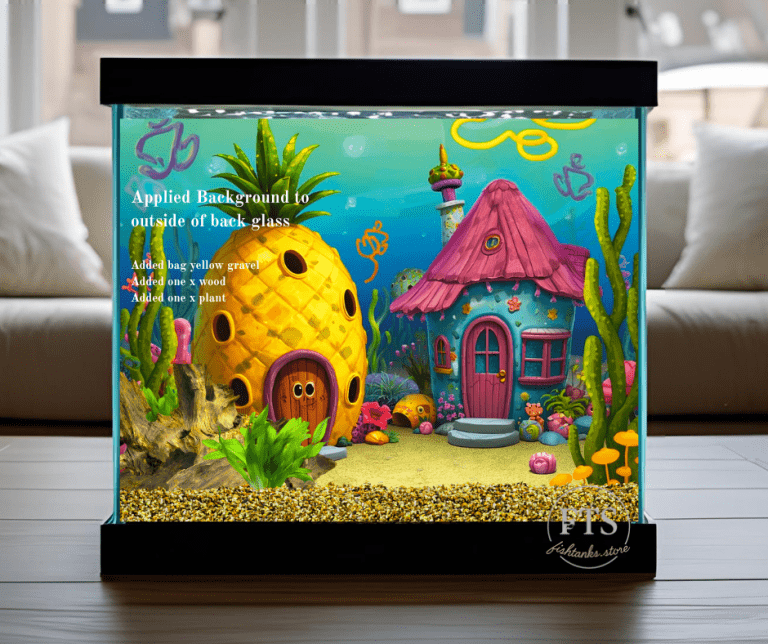
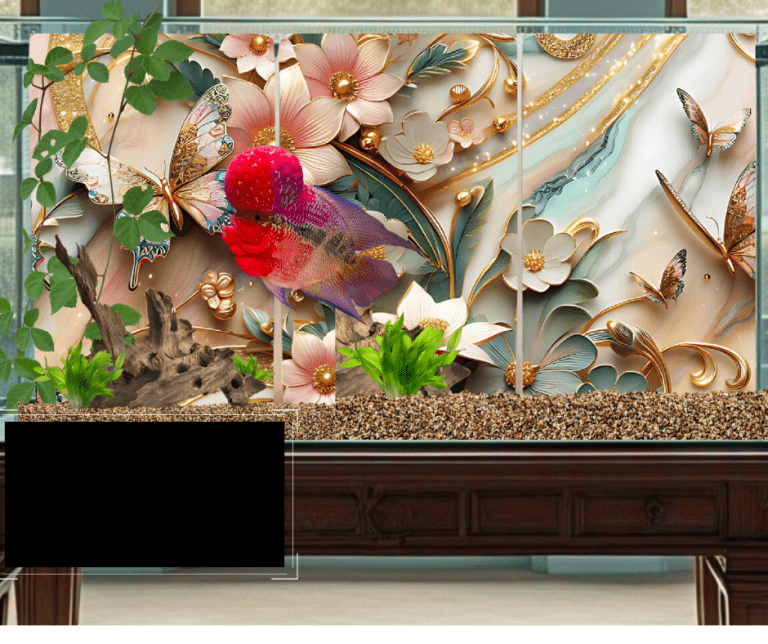
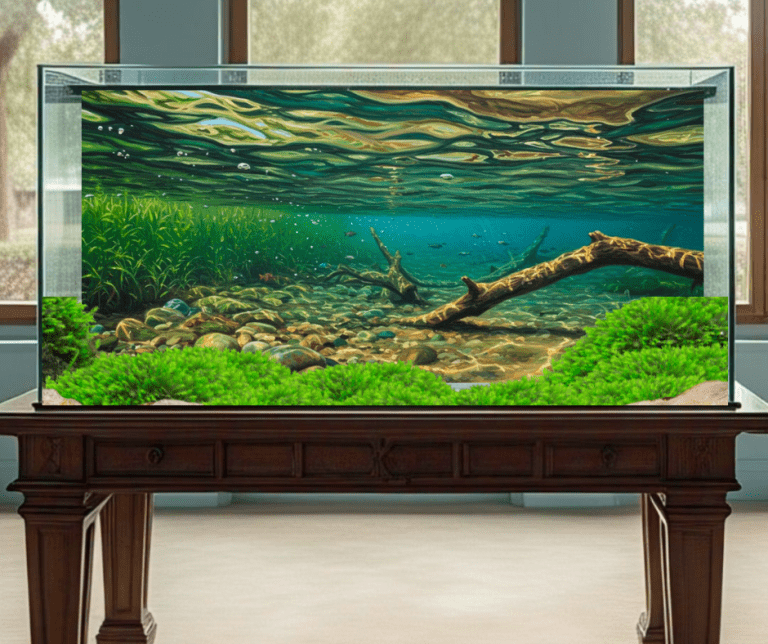


[…] more in-depth information, consider reading this blog post on cloudy fish tank water. We also have an infographic, which you are welcome to print out or share with friends. […]
[…] Fish tank cycling, is the process of getting your fish tank, or aquarium ready to introduce your fish to. In a nutshell, it’s all about the science of being able to keep fish alive in a glass box, without having to change out their dirty water for fresh water everyday. […]
[…] our aquarium journey is exciting. But first, we must know the basics. We need to avoid common issues like unstable water and stressed […]